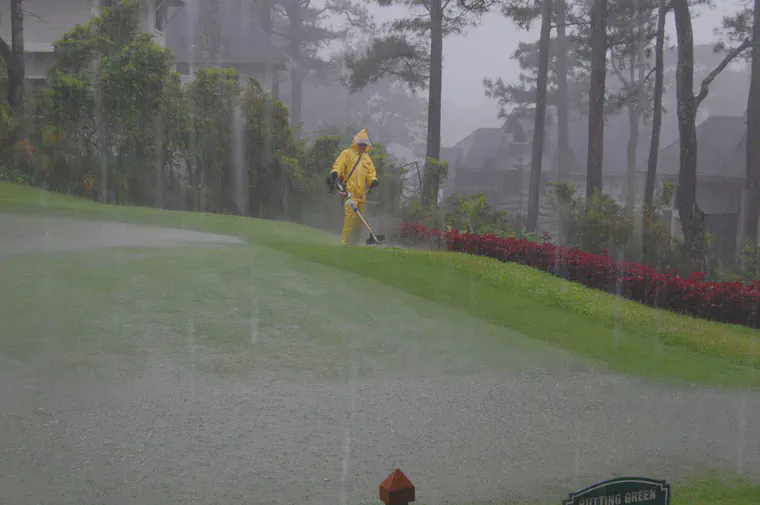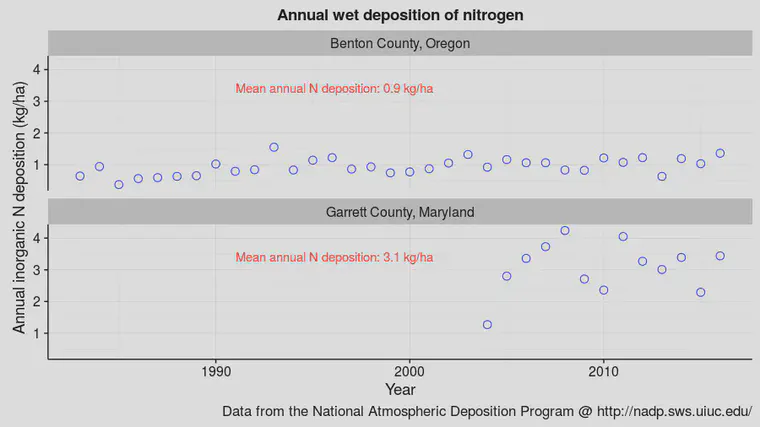How much N is in rain and snow?
When I wrote this post back in 2017, I’d just had a conversation about this very question.
“I think it is a tiny amount,” I said, “although sometimes I hear really large amounts when people tell me how much N comes in rain. I’ll be sure to look it up.”
I just looked it up, and it is generally a small amount, although there are locations with more.

You don’t need to wonder or speculate about this. There are some excellent sources for N deposition data. I looked at:
- National Atmospheric Deposition Program, USA data
- Air Pollution Information System, UK data
- Oak Ridge National Laboratory Distributed Active Archive Center, global data
For an example, I downloaded data for Benton County, Oregon, and Garrett County, Maryland. Compared to the amount of N used by grass, or applied as fertilizer in a year, this isn’t very much. I’d guess annual N rates would be about 10 to 15 g/m2 at those locations. Adding 0.1 to 0.3 g N/m2 would be less than 3% of the annual N rate.

The NADP Annual Data Summaries include maps that show the N deposition by location. There are a few hotspots that may get 20 kg/ha; that could be a substantial amount of N, say 10 to 20% of the annual amount used by the grass.
I looked up data for Tower Bridge in London using the APIS site. That was an annual total of 15.7 kg N/ha. That will be a substantial amount of N for turf in that location. I’d expect that may be about 20% of the amount a golf course putting green might use in London.